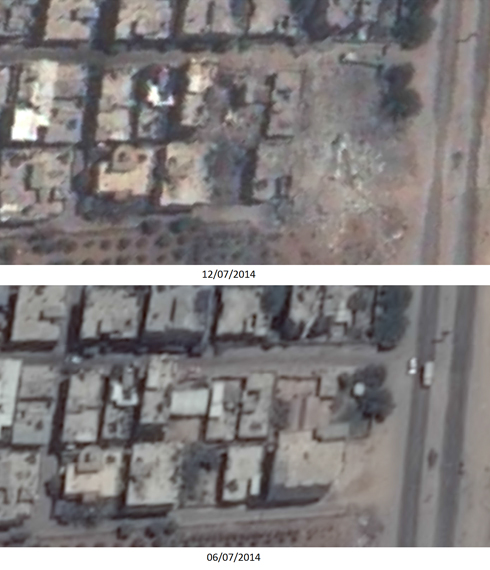Satellite footage published by Ynet showed the destruction wrought by 21 days of fighting in the Gaza neighborhood of Saja'iyya and the Nuseirat refugee camp.
The satellite snapped the frames on July 6 to document the Gaza Strip before Operation Protective Edge, and again on July 25, after a week of air and artillery strikes, as well as firefights on the ground.
The photos, taken by the Pleiades satellite for the United Nations, capture the areas before and after the operation, focusing on Saja'iyya – nicknamed the "Dahieh of Gaza."
The satellite snapped the frames on July 6 to document the Gaza Strip before Operation Protective Edge, and again on July 25, after a week of air and artillery strikes, as well as firefights on the ground.
According to figures published by the UN, 604 structures were destroyed in Saja'iyya and 236 were significantly damaged. The figures point at 66 craters created by bombings on roads and agricultural land.
The majority of the damage seen is in the eastern outskirts of Saja'iyya – the part closest to the border with Israel. The IDF discovered numerous terror tunnels in the area. A trail of destruction can be seen where no buildings are left standing.
An overall look at the picture shows the damage in Saja'iyya is greater than that caused by the Israeli Air Force strikes in Beirut's Dahieh suburb during the Second Lebanon War.
The figures and photos released from Nuseirat in the northern Gaza Strip portray significantly less damage. Forty-one buildings were destroyed and 13 severely damaged. A total of 45 craters can be seen.
Palestinians who left their homes during the ceasefire declared on Saturday noted that Operation Protective Edge was the most destructive of Israel's attacks, even more than Operation Cast Lead, which was considered particularly violent.
Roi Kais and Ronen Solomon contributed to this report.

















